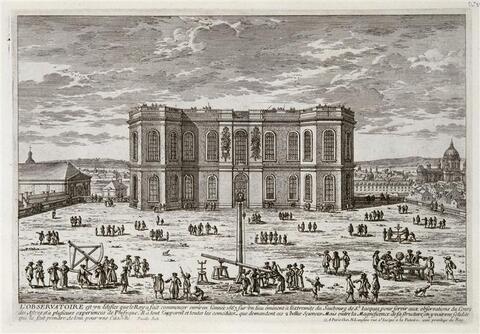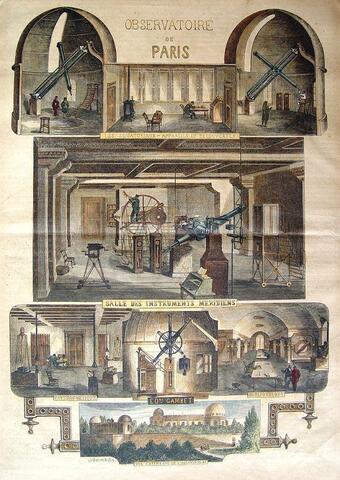
Stephen Johnston et Samuel Gessner au séminaire d’histoire de l’astronomie
Le mardi 14 janvier 2025, 14h-17h, le séminaire d’histoire des sciences astronomiques du LTE (Laboratoire Temps-Espace) de l’Observatoire de Paris reçoit Stephen Johnston (History of Science Museum, University of Oxford) et Samuel Gessner (Centro Interuniversitário de História das Ciências e da Tecnologia, Universidade de Lisboa).
-
Le 14 jan. 2025
-
14:00 - 17:00
-
Séminaire
-
Salle du Conseil, Observatoire de Paris, ou à distance
Programme
- Sixteenth-century intermediality in debating the Eighth Sphere: another troublesome trepidation sphere
Samuel Gessner (Centro Interuniversitário de História das Ciências e da Tecnologia, Universidade de Lisboa)
Since antiquity astronomers have known that the ecliptic longitude of the fixed stars slowly changes. The stars were considered to be fixed on one sphere, traditionally called the Eighth Sphere. That its slow and apparently intricate motion was still discussed in the fifteenth and sixteenth centuries is attested by various surviving documents. These include an astonishing variety of media: written treatises, numerical tables, diagrams, and two- and three-dimensional mathematical instruments. Although the context of production of these sources is hard to reconstruct, their sheer variety offers a notion of the intermedial space of the debate on the Eighth Sphere. It allows surmising that the debate involved circles beyond students and scholars and encompassed conversations among humanists, instrument makers, publishers, and princes with their courtiers. Recent research has clarified the meaning of a complex brass armillary sphere by connecting it with J. Werner’s 1522 treatise about an alternative theory of trepidation. It appeared that those ideas, although dismissed by N. Copernicus, echoed during their time crossing the boundary between the medium of text and instrument. To uncover further strands of the Eighth-Sphere discussion, an armillary from 1575, preserved in Brussels, will be in the focus of this paper. This is one of a series of lavish brass spheres made at the Louvain workshop of G. Arsenius, and shows troubling, hitherto inexplicable details. It exposes the perplexities that arise when the historian confronts an astronomical topic that permeates various media and demands an intermedial study.
-
Early astronomy in context: the view from the museum
Stephen Johnston (History of Science Museum, University of Oxford)Instruments were a key feature of the medieval European corpus astronomicum, with texts on the quadrant and astrolabe featuring as regular accompaniments to Sacrobosco’s De sphaera. As part of a curriculum extending from the basics of calculation to the calendar and planetary motions, instrument manuals were embedded in the didactic culture of the universities. However, if we switch from manuscripts to surviving instruments, what do the actual objects reveal about both the practice and the wider reception of astronomy? Though typically anonymous and undated, and lacking a definite indication of geographical origin, the instruments are nevertheless rich sources when examined comparatively – indicating the diversity of likely owners, the distribution of craft skills and the longevity of devices which were reworked and updated over long periods. The act of handling and using original instruments is also highly suggestive, hinting at astronomy as a form of embodied knowledge, whose effective performance required a particular comportment and set of gestures from its early users. Surviving objects nevertheless only take us so far: we can see from other evidence that there are significant absences from the record of modern collections. I conclude by using the example of Merton College Oxford both to assess how (un)representative are the mechanisms of survival and also to underline the value of reconnecting medieval archives and instruments.

